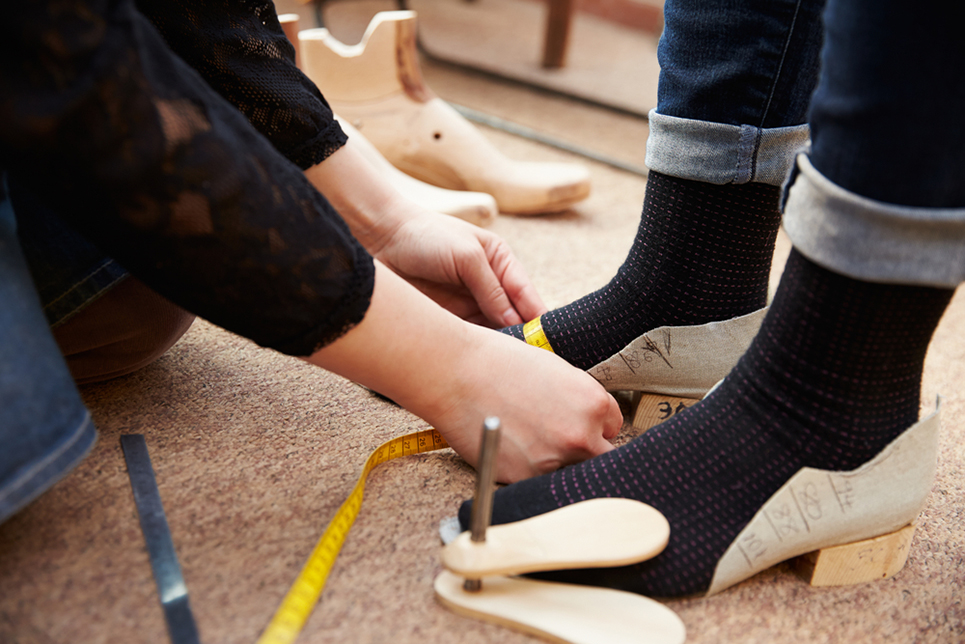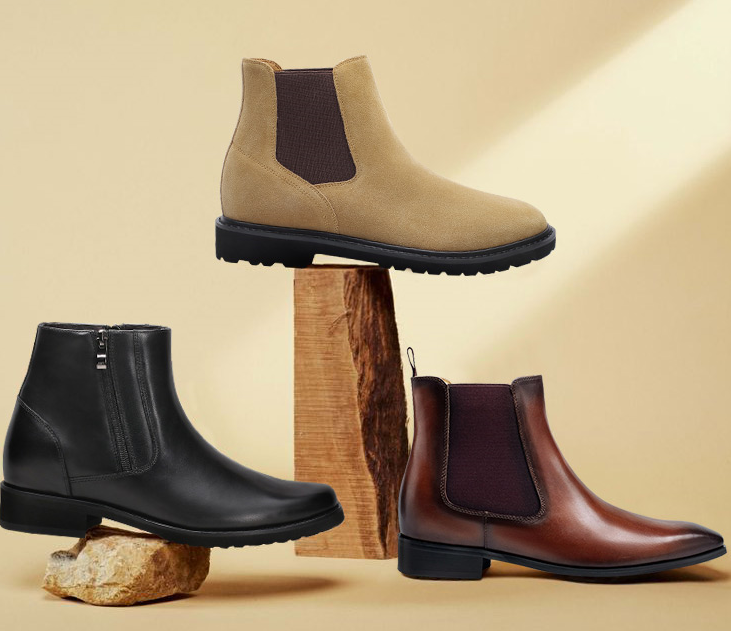Breaking in new elevator boots presents somewhat of a conundrum. While you know the sturdy leather and rugged sole will serve you well down the line, those very qualities that draw us to boots are what cause discomfort in the early stages. The structures designed to stand up to active wear feel stiff and unyielding at first.
A newly purchased pair, though promising exceptional quality and durability, can be unappealing to don due to their rigid feel straight from the box. Over time and with persistent wearing, the elements promising long comfort will conform and mold to the foot for an exceptional fit. But that first period of shaping requires patience as premium materials give way gradually to one’s gait.
Remember, this is a break-in process. It may take some time. Here’s how to make it as easy as a walk in the park.
Start With the Right Size
Getting the right size is essential for a pain-free break-in. Our feet change sizes throughout the day, swelling larger by evening. It’s best to go to the store at the end of the day to be properly measured. Try the boots on and walk around a bit. Are your toes touching the end? Is there room for your feet to move comfortably?

Opt for a half or full size up if needed, especially if you have high arches or bony heels and toes. The extra space will allow swelling without feeling constrained. As the leather molds to your foot over time, thin leathers like suede will stretch more than thick work boot leather, you can add an insert if boots feel loose once broken in. But starting too small risks blisters that halt your ability to wear them. Be patient through the stretches of discomfort as the boots slowly shape to your unique feet.
Choose the Right Heel Height
When just starting out in elevated boots, it’s best to go for a modest 2-3 inch heel that is low enough for prolonged wear immediately without pain. While towering heights may be the look you want eventually, during break-in even a quarter inch more can make a big difference on tender feet.

Taller heels place more pressure on ball and heel areas as boots conform around your stride. 2-3 inches leaves room for wiggle room. Once broken in after several wears over weeks, feel free to step it up if desired. Just stick to baby steps at first for a satisfied break-in.
Check out our high heeled boot collections to find out different heel height and what they look like.
2 Inches | 3 Inches | 4 Inches | 6 Inches
Wear Thick Socks and Go for a Walk (Inside!)
Leather is stiff out of the box, and it softens and stretches best when combined with light pressure, heat, and moisture.
Soft, cushioned socks are your new BFFs for breaking in boots. Not only do they pad pressure points inside boots as they contour, this process of adding thicker socks will also begin stretching the leather.
Start wearing boots just to walk around your home for 10-15 minutes at a time. Padding around inside allows steady movement to shape the boot while avoiding pain on hard pavement too soon. Gradually increase minutes by 5 each session over a few wears, taking rest days between. The indoor power walks prevent stress on feet while still massaging the leather to your feet.
Give the Boot Break-In Process a Break

It’s tempting to power through discomfort by wearing new boots daily. However, this can backfire by creating blisters and sore spots that stall the process. Plan to only wear boots 2-3 times per week max at the start. This allows feet to recover and remains elastic between wears.
On off days, use a boot stretcher or stuffed socks to keep boots expanded – this maintains progress between wears. Taking breaks respects the natural time needed for leather to contour just right to your feet. You’ll reach the finishing line of comfort quicker if giving some patience to your feet and boots along the journey.
Use a Boot Stretcher to Stretch Them Out
Boot stretchers are inexpensive tools that speed up the process during rest days. Place them in boots overnight to widen out the shaft so it doesn’t collapse when not being worn. Different styles either use leverage or cedar blocks to gently expand the leather. The stretch allows boots to naturally hold their elongated shape better for the next wear.
By maintaining the stretches achieved with each wearing, boots soften up faster over weeks versus allowing them to contract between wears unassisted. Check that stretchers are pushing out boots evenly without buckling in weird spots.
Try a Different Lacing Combo

For high heel dress boots with laces or chukka boots, fully lacing can choke out circulation during break-in before leather has fully softened. Loosen laces through eyelets starting from the ankle up or leave bottom eyes undisplaced. Tie loosely just below the knee for flex. Once boots feel broken in after several wears, experiment with lacing from top down for support or cross-ways for flair. Slip-on styles, like high heel Chelsea boots, can also provide flexibility while molding inside.
Play with fun lacing styles as comfort increases to complete each look. But initially, going loose is key to pain-free wear as boots gently form to your step.


